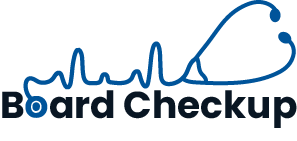There are five steps involved in the board effectiveness self-assessment process:
1. Secure agreement to participate in the self-assessment from your board and organization
Talk to your board chair and the organization's top manager about the value of conducting a self-assessment of the board's effectiveness using this confidential online survey. Before registering for the survey, the board as a whole should agree to participate. Once board agreement has been reached, a representative of the board will need to register to provide consent on behalf of the board. It should be noted that individual participants provide consent by completing and submitting the questionnaire. Participants may withdraw consent at any time by leaving the survey before it is completed. Only completed surveys (all questions answered) will be included in the self-assessment report.
2. Determine who should participate in the self-assessment and inform them
To get the maximum value from the board self-assessment it is very important to obtain the participation of all board members PLUS all those whose work allows them to become familiar with the way the board operates. Typically, this latter group would include the organization's chief executive officer (whatever the title of that person might be) and other members of the management team, for example, program heads, chief financial officer, etc. In some cases, certain leadership volunteers and other key staff might have opportunities to see the board at work so they, too could participate. Be sure to inform prospective participants of the purpose of the self-assessment and how the information they provide will be used. Also, please be sure to share with participants the BOARDCHECKUP Privacy Policy, (which can be found at the footer of this page) and inform them of the steps we have taken to maintain confidentiality (privacy) and information security (encryption).
To prepare prospective participants for taking the board self-assessment questionnaire, it may be helpful to explain to them that it's similar to the one you get at a doctor’s office when you go for a checkup. These assessments typically contain a list of possible health issues. You check those that concern you and then discuss them with the doctor. In the same way, the questionnaire in this assessment is the beginning of a health checkup for your board. The items in it consist of issues raised by actual board members in many kinds of nonprofit organizations over the years. They are framed as statements of problems and respondents are asked to indicate to what extent problems like these exist in their organization. The fewer items they agree with, the more “healthy” they consider their board to be. When they do agree with one of the problem statements, they should not feel they are being critical of the board (just as checking “Do you get headaches?” on the doctor’s questionnaire does not mean you are somehow at fault for having headaches). It merely indicates that this is a matter they think should be discussed.
3. Designate a coordinator and have that person register the organization through our website
It is important that there be just one person who will take on the responsibility of being the coordinator for the self-assessment. S/he will need to register as such through the online registration page on this website. By registering, the coordinator provides consent to participate on behalf of the board. The registration process requires that the coordinator provide us with basic information such as how many people will be asked to participate in the project and when the deadline for completing the questionnaire will be. Ideally the Board Self-Assessment Coordinator should be someone who is well respected with good factual knowledge of the board and the organization. This is because, for the research project of which this is a part, we require certain basic information and the coordinator is the person who will be asked to provide it. This person should also be comfortable completing an online registration, logging into and out of our site as the registered user, and communicating electronically. Research ethics require that we only communicate with the registered coordinator therefore it is is important that this person be computer literate. Note: it is best if the registered coordinator has access to an alternate email provider since there are some, like AOL and Comcast,whose SPAM filters might sometimes interfere with the delivery of system generated emails.
4. Actively manage the self-assessment process in the organization
Once an organization has been registered, the Coordinator will be sent an email containing the link to the Board Self-Assessment Questionnaire. S/he will then send an email to all those who are being asked to participate which contains the link to the survey along with instructions on how to complete and submit it. (We provide a template of this email for those who wish to use it). As the period for reponding progresses, the registered coordinator will need to log back into the system to monitor the survey response rate. If the rate is lower than expected, the coordinator is encouraged to send email reminders urging those who haven't responded to do so before the end of the survey period. (Again, we supply a sample 'reminder' email which may be used.
5. Obtain a copy of the self-assessment findings and board check-up report
At the completion of the survey period, the coordinator will need to log back into the system to close the survey and request the results. There is no need to conduct statistical analyses of results. The system will provide two summary reports that can be shared with participants. These reports include results showing levels of effectiveness across 9 elements of board functioning as well as a summary of responses to each item in the questionnaire.

